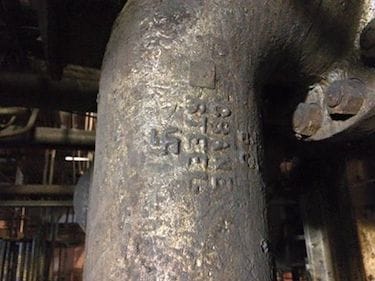While the swastika evokes emotions such as pain, hatred, sorrow, anger, sadness, disgust— insert your own adjective here—and rightfully so—did you know that there is a history in American manufacturing behind its use and some companies actually stamped it on their products—pre-World War II era—as a symbol of prosperity?

Jeff Joy Depakakibo submitted this image from a jobsite and says, “I took this at an old coal-fired power plant. I have been looking for these for years. Most people have no idea what the swastika means here.”
According to information provided by the website mallstuffs.com, Crane Steel, for instance, founded in 1855 and started by R.T. Crane at Chicago, manufactured steam and gas cocks, iron and forged steel screwed fittings, steel and iron valves. All of their products were marked by a swastika symbol followed by the company name. In fact, the Crane Valve Company manufactured steel valves in the ’20s and ’30s in the U.S. with the swastika markings, using a symbol with the arms pointed to the right. The company discontinued the use of the swastika in their goods after the 1930s.
And, Wikipedia states that the Buffum Tool Company of Louisiana, Missouri, manufactured “High Grade Tools for High Grade Workmen” from about 1909 to 1922. The Buffum Company’s trademark was a swastika with right facing arms. During World War I it made bayonets and airplane parts. The company’s logo was the “Good Luck/Blessing/Swastika Cross” and many of the products, sold nationwide, had “the good luck cross on them.”
Used years before its association with Hitler Nazism, the word swastika comes from the Sanskrit svastika, which means “good fortune” or “well-being.” Despite the origins, the swastika has become widely associated with Nazi Germany, and its atrocities to mankind, that contemporary uses frequently incite controversy. The Nazi Party adopted the symbol in the 1920s, and its use in Western countries faded after the Nazi association became prevalent in the 1930s.




Join the conversation: